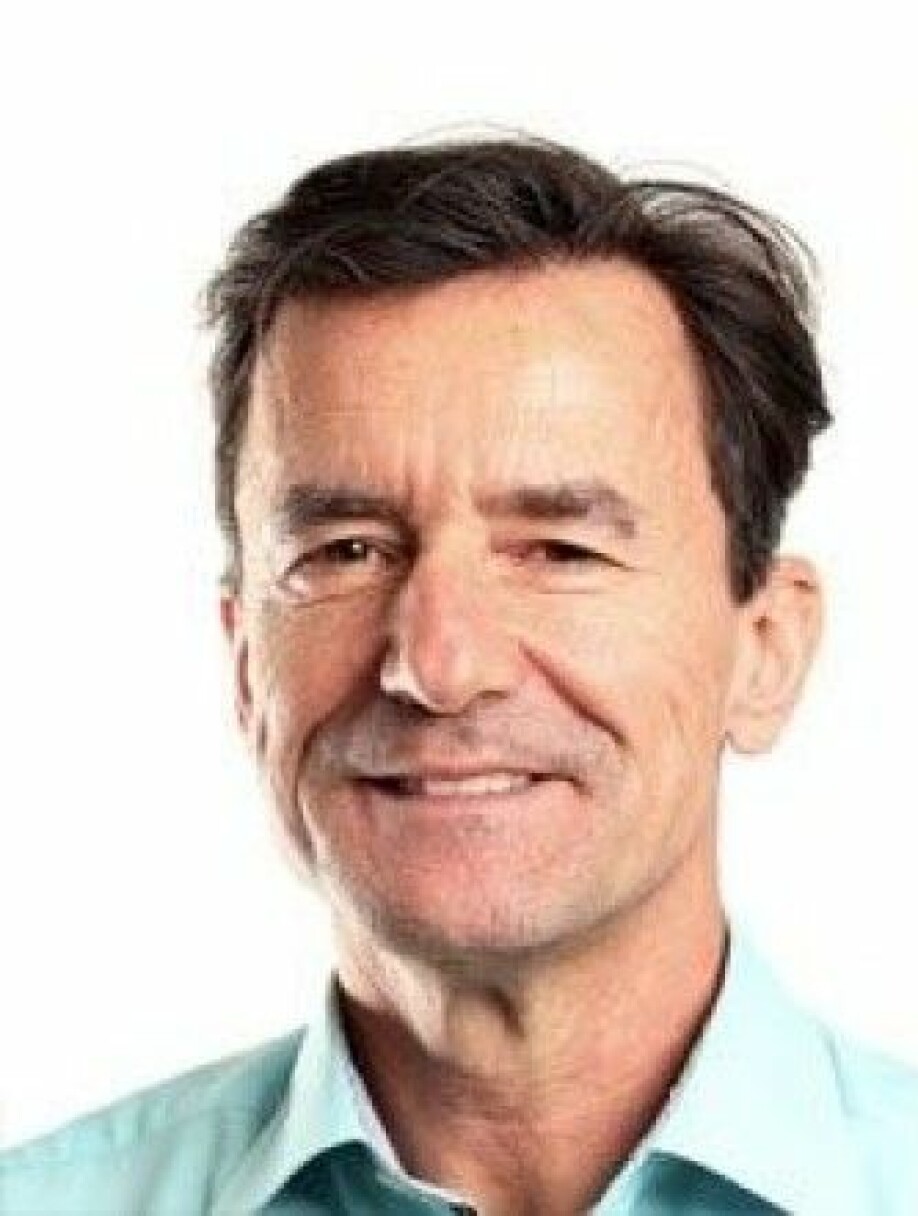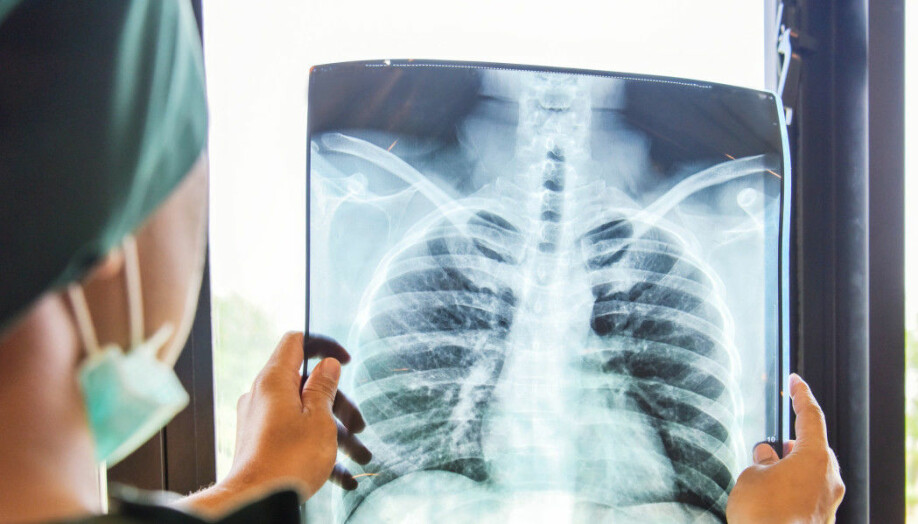
Surviving cancer in the Nordics:
Norwegians with lung cancer live longer than in neighbouring countries, but are more likely to die from melanoma
While mortality due to melanoma has been stable in the rest of the Nordic countries, it has increased somewhat in Norway . “It’s important to go to the doctor early,” says Tom Børge Johannesen from the Cancer Registry of Norway.
Survival rates for nine of the most widespread cancers have increased in all the Nordic countries over the past 25 years.
Researchers reported the findings in a new study, in which they compared cancer survival across the Nordic countries during the period from 1990-2016.
“Norway has very good results for survival of the major cancers, such as bowel cancer, rectal cancer, lung cancer, kidney cancer, breast cancer and prostate cancer,” says Tom Børge Johannesen to sciencenorway.no.
These are the cancers that affect most people.
Johannesen is deputy head of the Cancer Registry's registry department, and has contributed to the new study from the Norwegian side.

More are surviving lung cancer
Differences between countries have evened out, the researchers found. But there is still variation between countries for different cancers.
Norway stands out, for better or worse, with two cancers, lung cancer and melanoma, or skin cancer.
“We’ve seen a particularly gratifying improvement in survival for lung cancer, especially among those with operable tumours. Combined with chemotherapy, this has increased survival in recent years,” he said.
“We see that a larger proportion of lung cancer patients in Norway and Iceland who survive the first year after diagnosis, survive for five years, compared to Denmark and Finland,” he said.
Women with lung cancer also have better survival than in Sweden.
More lung cancer patients have surgery
One reason for the improvement in survival among lung cancer patients in Norway is that the treatment has become more centralized, according to Johannesen.
“Lung cancer doctors are becoming increasingly aggressive. Where doctors previously had to resign themselves being unable to remove tumours surgically, we now see that more and more patients are being offered surgery,” he said.
He is interested in seeing lung cancer treatment groups in the other Nordic countries will be inspired by how their Norwegian colleagues select patients who can benefit from surgery.
Only one in five survives lung cancer
Nevertheless, survival is still low for lung cancer, compared to other cancers.
Norway and Iceland have the greatest survival among women. Here, 26 per cent of lung cancer patients survive for five years. In Finland, only 19 per cent survive this long.
Among Icelandic men, 20 per cent survive for five years, and among Norwegian men 19 per cent. Only 13 per cent of Finnish men survive lung cancer for five years.
The difference is up to seven percentage points between the countries for both sexes.

Better survival after melanoma in three neighboring countries
Fewer Norwegians survive melanoma compared to the other Nordic countries.
“Norway has some work to do here,” Tom Børge Johannesen said.
Norwegian men are highest in the Nordic countries both in terms of incidence and mortality from melanoma.
In Iceland, 97 per cent of women survive melanoma for five years, while only 93 per cent of Norwegian women survive the same length of time.
Among Danish and Swedish men, 91 per cent survive for five years, while only 86 per cent of Icelandic men live this long. Among Norwegian and Finnish men, 87 per cent survive.
Norway is at the very top worldwide when it comes to the incidence of melanoma, along with Australia.
“We don’t know why. But we can’t rule out the fact that some people, particularly men, may not protect themselves enough from the sun,” says Johannesen.
Important to start treatment early
The most important thing is to focus on prevention, Johannesen says.
“Secondly, it is important that melanoma be detected as early as possible, while the melanoma is small,” he said.
The reason is because it’s important to start treatment while the melanoma is still thin.
For that reason, it’s important to go to your doctor as early as possible if you suspect that you have a mole that has changed, he says.
Johannesen would like to encourage people to see their doctor if they have a suspect mole, especially now during the COVID-19 era, where studies show that many people see their doctor less often than before.
Patients should also follow up on check-ups and consult a doctor if they suspect their cancer has come back.
Remove the tumour completely
One possible reason why Norwegian men have a higher mortality rate than their Swedish and Danish counterparts is that too few patients in Norway have their tumours removed completely during the initial operation.
“In Norway, three out of four people have their tumour removed completely, with a good distance to healthy tissue. But the proportion should be over 90 per cent,” Johannesen said on the Cancer Registry's website.
A much lower proportion of individuals have their entire tumour removed at private clinics and GPs than at Norwegian hospitals.
“We should increase the level of knowledge about melanomas in GPs and at private clinics, to ensure good treatment at the beginning of the process,” says Johannesen.
Positiv eeffects of immunortherapy
But this is a small bright spot.
For those whose melanoma has spread to other organs, Johannesen emphasizes that survival in Norway is still on the right track.
“Until 2011, chemotherapy was the only thing we could offer. Now we are slowly starting to see the positive effects of immunotherapy on the survival of this group, and that’s gratifying,” he says.
Almost seven out of ten survive colon cancer
The incidence of colon cancer has increased for both sexes, while mortality has decreased somewhat.
Norway is the most successful of the Nordic countries in the treatment of colon cancer among women. Among Norwegian women, 69 percent survive for five years, compared to 62 per cent for Icelandic women.
Among Danish men with colon cancer, 67 per cent survive for five years, while 63 per cent of Swedish men live that long. Norwegian men have a 65 per cent survival rate. Denmark in particular has made a huge improvement in survival for this cancer compared to before.
Small differences for breast cancer
There is little difference between the Nordic countries when it comes to five-year survival for breast cancer.
The highest survival for this form of cancer is in Finland and Sweden, where 90 per cent are still alive after five years. Norway is right behind, with 89 per cent survival, while in Denmark and Iceland, 87 per cent survive.
The incidence of breast cancer has increased in all the Nordic countries, but least in Norway. Denmark in particular has made a leap in survival since 2010.
Nine out of ten survive prostate cancer
Prostate cancer also has a high survival rate. The highest survival is in Finland, where 94 percent survive at least five years. Norway is right behind, with 93 per cent survival. In Denmark, 87 per cent of men survive for five years.
The greatest improvement over the last ten years has been in Denmark.
Denmark has generally had the greatest improvement in survival in recent years. Previously, Danish patients performed worse than in neighbouring countries.
Now the proportion of Danes who survive cancer is at the same level as in the other Nordic countries.
Many reasons for better survival
The researchers conclude that there are many reasons why cancer survival has improved.
Earlier and precise diagnoses, improved treatment and standardized treatments are all a part of the answer, the researchers say.
“Even though there are differences in the health care systems between the Nordic countries, we now see very small differences in general in cancer survival,” Johannesen says.
Since improvements in survival alone can provide a skewed picture of what is really happening, researchers have also taken into account the development in incidence and mortality for the different cancers.
International comparisons of cancer survival are useful for assessing the quality of national health care compared to other countries.
“For us, it’s very useful to get a better impression of whether we are where we should be when it comes to cancer treatment. In Norway, we should aim to be among the best in the world in treatment, survival and low mortality,” says Johannesen.
These are the nine cancers that were analysed
More than two million patients who were diagnosed with cancer between 1990 and 2016 are included in the study.
Researchers at Karolinska Institutet in Sweden have compared one-year and five-year survival between the countries, over time.
The researchers used data from the national cancer registries in all the Nordic countries.
The patients who are included have been followed up until 2017.
These are the cancers have been analysed: colon cancer, lung cancer, melanoma, kidney cancer, breast cancer, uterine cancer, ovarian cancer, prostate cancer and rectal cancer.
Reference:
Frida E. Lundberg et.al.: Trends in cancer survival in the Nordic countries 1990-2016: the NORDCAN survival studies. Acta Oncologica, 2020.
———
Read the Norwegian version of this article at forskning.no































